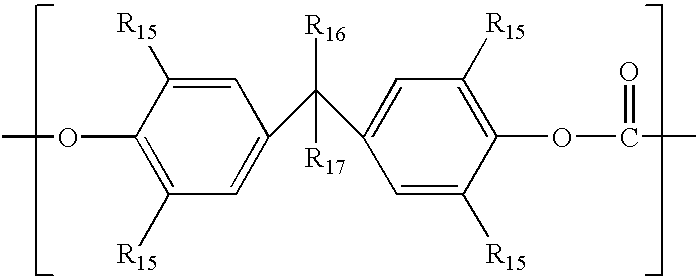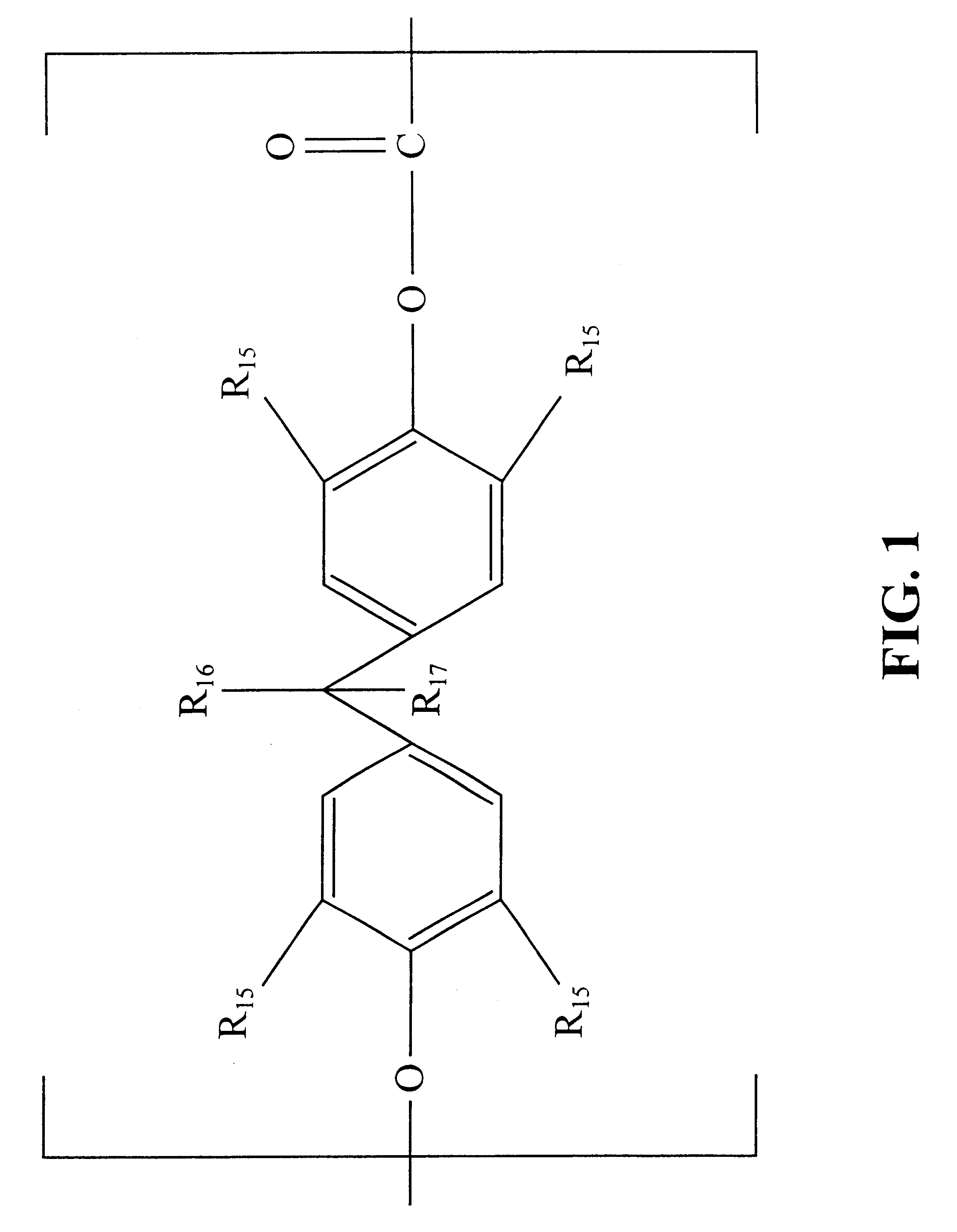Method of making polycarbonates
- Summary
- Abstract
- Description
- Claims
- Application Information
AI Technical Summary
Benefits of technology
Problems solved by technology
Method used
Image
Examples
example 2
The modifying copolymers and the control copolymer of Example 1 and BPA homopolymer (100 grade LEXAN polycarbonate) were dissolved in 2:1, 1:1 and 1:2 ratios by weight to give 10% solutions in methylene chloride. The clear solutions were used to cast films, and the films were dried overnight. Tg values for the films were determined by DSC. In the films prepared with the control copolymer, two Tg values were observed. In contrast, in the films prepared with the modifying copolymer, a single Tg value was obtained, indicating that the BPA homopolymer and the modifying copolymer were miscible. Table 1 shows the values of Tg obtained.
example 3
The experiment of Example 2 was repeated except that the modifying copolymer was prepared using 75mol % of the 30 / 70 menthane bisphenol mixture to extend the invention to higher values of Tg. The 75% modifying copolymer was mixed with BPA homopolymer at ratios of 2:1, 1:1 and 1:2 by weight. The films produced from the resulting mixtures exhibited two Tg values, indicating that modifying copolymer was not miscible with the BPA at these levels.
PUM
| Property | Measurement | Unit |
|---|---|---|
| Fraction | aaaaa | aaaaa |
| Fraction | aaaaa | aaaaa |
| Angle | aaaaa | aaaaa |
Abstract
Description
Claims
Application Information
 Login to View More
Login to View More - R&D
- Intellectual Property
- Life Sciences
- Materials
- Tech Scout
- Unparalleled Data Quality
- Higher Quality Content
- 60% Fewer Hallucinations
Browse by: Latest US Patents, China's latest patents, Technical Efficacy Thesaurus, Application Domain, Technology Topic, Popular Technical Reports.
© 2025 PatSnap. All rights reserved.Legal|Privacy policy|Modern Slavery Act Transparency Statement|Sitemap|About US| Contact US: help@patsnap.com



